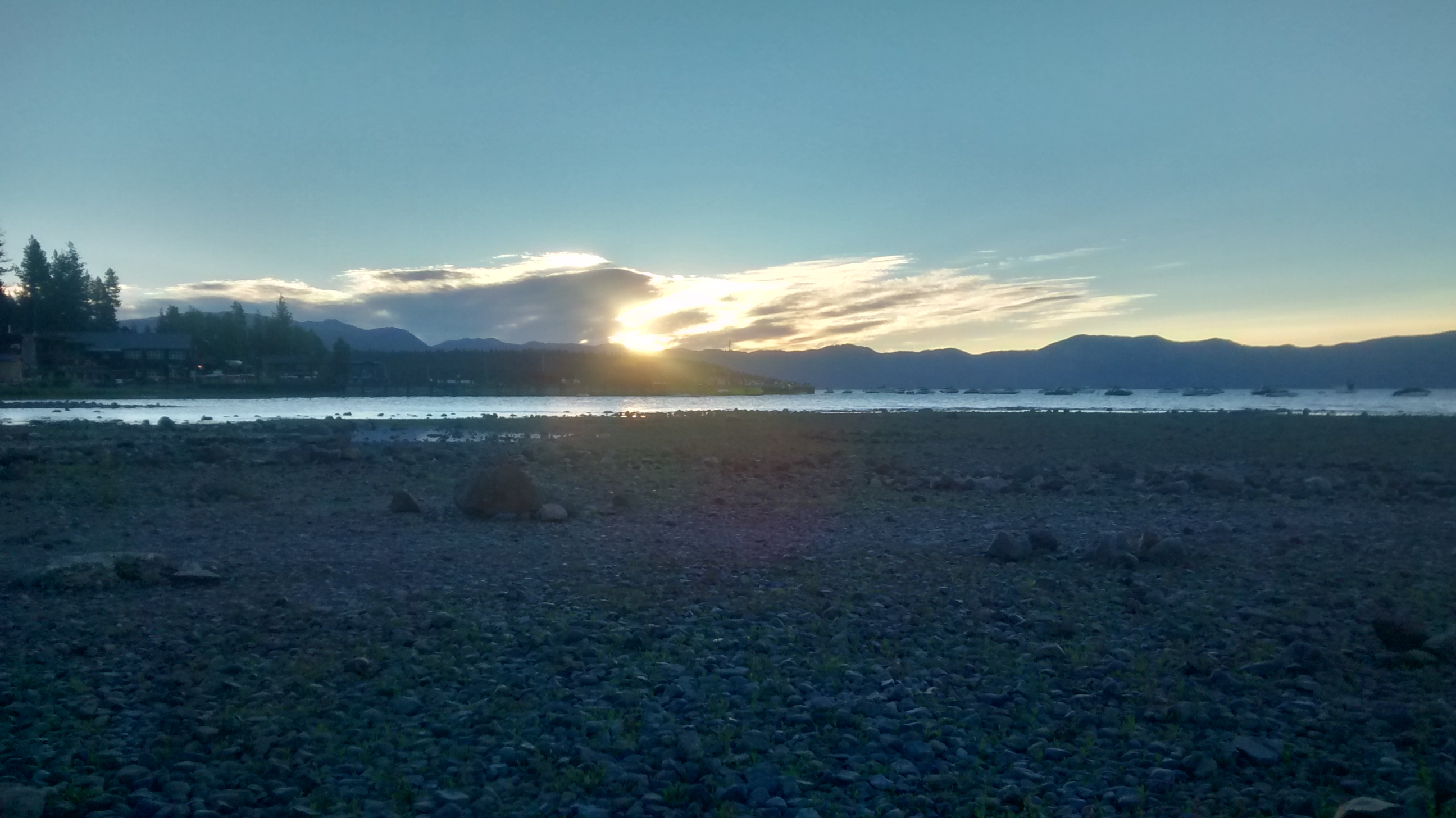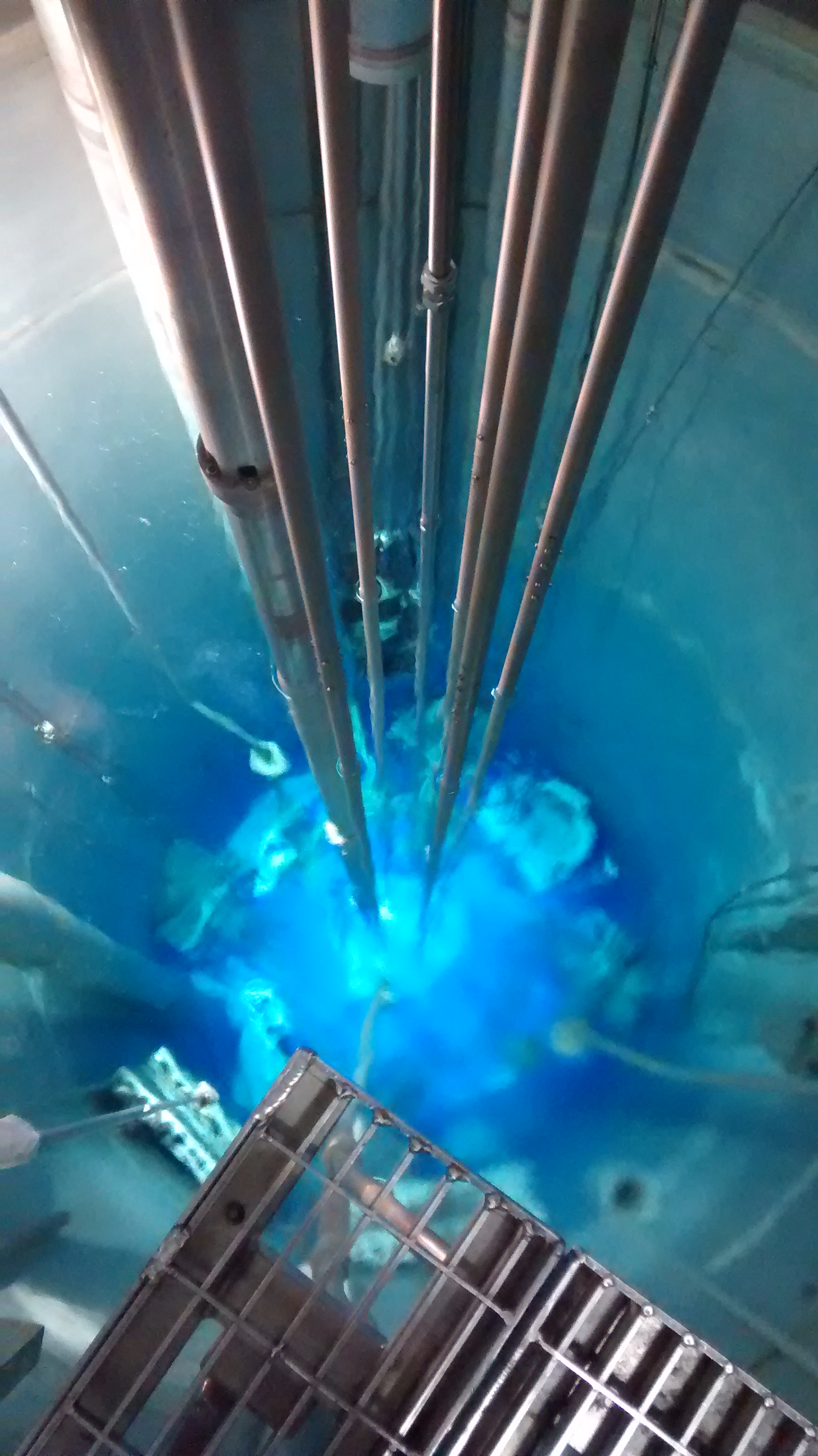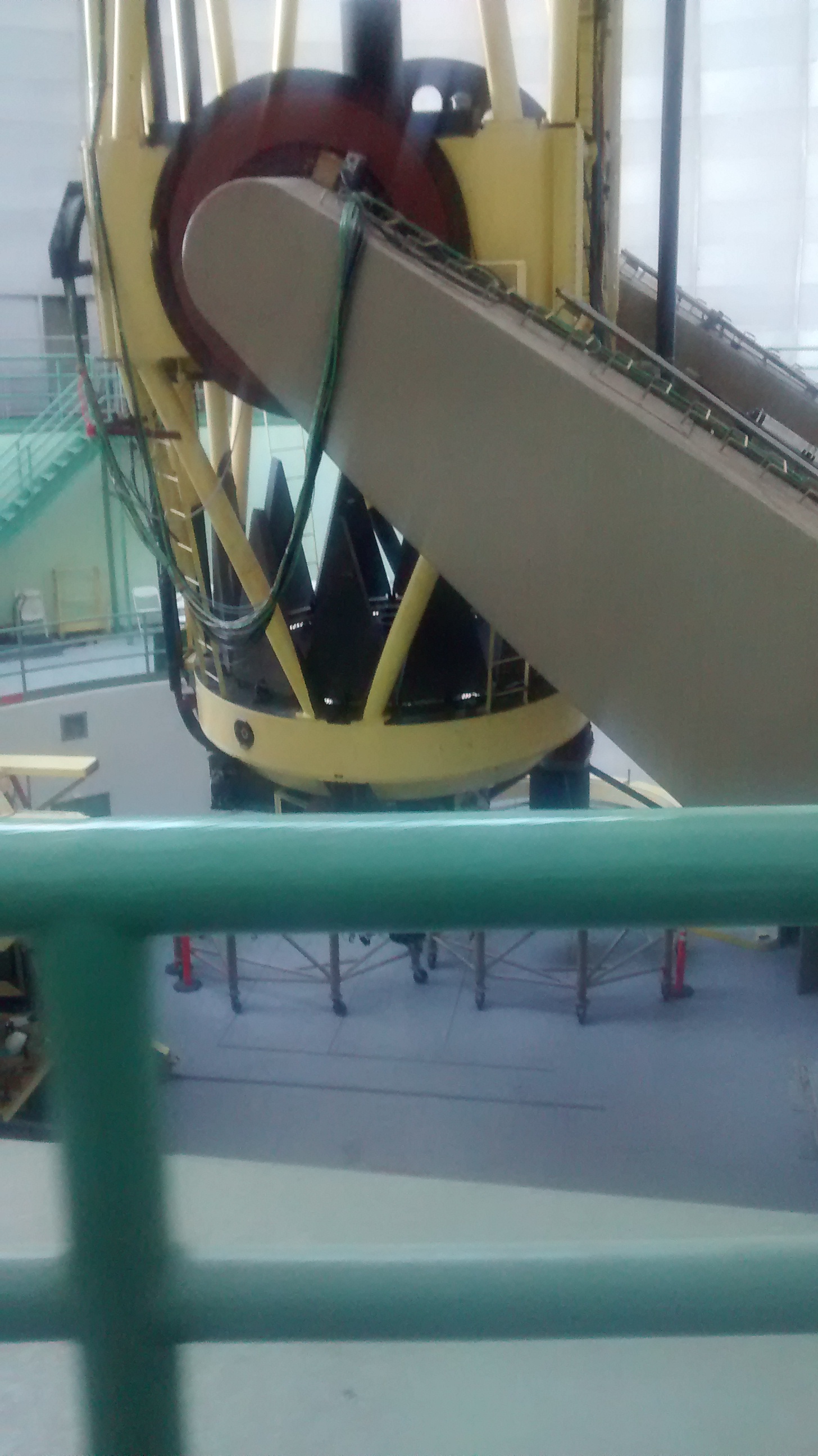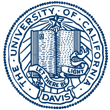As indicated below, this year's trips fit nicely into the four compass directions, plus a fifth site very close to Davis!
East: Lake Tahoe
We began our visit to Lake Tahoe at the Tahoe City field station of the Tahoe Environmental Research Center. We saw the new buoys that will be used for NASA's data collection on the lake. These were originally set up for calibration of satellite instruments, since the lake is high enough to be usually visible from orbit and large enough to have low temperature variation. We also heard the lake timeline story, including multiple wrong-headed incidents where well-meaning people introduced non-native species with unintended consequences. The next morning an attempt to see sunrise over Lake Tahoe (below left) was foiled by the lone group of clouds along the entire rim. The vast rocky expanse in the foreground of the photo shows how low the lake level was after four years of drought; normally it is entirely submerged! Students then split into groups who attended church or hiked to Five Lakes or Mount Tallac (below right). A few of us reproduced some of the vortex physics of this Physics Girl video in the swimming pool, using soy sauce in place of food coloring.


Central: McClellan Nuclear Research Center
McClellan's TRIGA Reactor boasts the two largest radiography bays in the world, which were originally designed for testing the wings of F-111 planes. These were the first planes with variable wing geometry, and the wings were periodically removed from the airplanes and imaged at McClellan. UC Davis took over the reactor when the air force base closed in 2000. The reactor is now used for some research efforts. Several UCD physicists measure impurities in materials for their in neutrino/dark matter detectors through neutron activation. The reactor can also simulate radiation doses that satellites or other spacecraft will receive over multiple years, and its effect on performance. Other current uses involve plants. Imaging plant root systems and their relation to water in the soil may help in developing more drought-resistant plants. Other plants are irradiated at a dose that kills about half of the plants. The idea is to have the maximum opportunity to observe the effects of mutations. After irradiation, the plants are observed, and mutations in speciments that show potentially useful traits can be tracked down through DNA analysis. Researchers can then attempt to create the same mutations through other means; the irradiated plants themselves are not used directly in developing new plant varieties. The pictures are of the reactor core and the chamber for measuring irradiated samples.


West: Armstrong Redwoods and Goat Rock Beach
We hiked through much of Armstrong Redwoods State Natural Reserve, seeing trees more than a millenium old and taller than the length of a football field. We had a picnic lunch under the redwoods, then left for the ocean. Goat Rock Beach has colonies of mussels, a horde of seals (below right), and fantastic views of arched rocks near the shore.

North: Lassen Volcanic National Park
Our Lassen trip followed the routine developed over the past few visits: seeing the Subway Cave lava tube just northeast of the park itself, climbing the Cinder Cone and camping at Butte Lake, stopping at the visitor center and walking around Manzanita Lake, pausing at the Hot Rock en route to lunch at King's Creek Picnic Area, and hiking to the Bumpass Hell hydrothermal area. This itinerary mixes interesting volcano-created structures and sights of the devastation from Mount Lassen's 1915 eruption with breathtakingly gorgeous mountain scenery. The photos show the Painted Dunes with Snag Lake in the background as we started to descend Cinder Cone, and the Bumpass Hell boardwalk.

South: Lick Observatory
Atop Mount Hamilton near San Jose is the skeletal town that maintains the Lick Observatory telescopes. Even a decade ago the town was much more active, with the last one-room schoolhouse in the country and a special cafeteria for visiting scientists. Given the hourlong drive up on an extremely curvy road, it's not really an ideal place to live though. As telescopes became more automated, fewer scientists made the trek, opting instead for remote control. That meant fewer support services were needed, until the cafeteria and school closed. We had a private tour of the site, hearing about the history of the observatory, its telescopes, and its founder. We then viewed several objects through the 36" refracting telescope. Unfortunately the observatory is not allowed to move the floor inside the large refractor's dome until some safety inspections are completed. That limited us to looking at objects well above the horizon. If the telescope became too close to horizontal, its eyepiece would be too high to reach, even with a tall stepladder. Photos are of the 3-meter reflecting telescope, and of REU students watching sunset at a pause during the tour.

